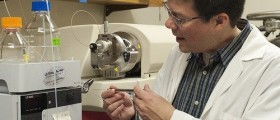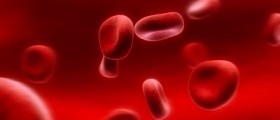
Leukemia is a cancer of blood cells and bone marrow which presents with increased production of white blood cells. Basically the overproduction of leukocytes is present. There are two types of leukemia, acute and chronic. Unlike the acute leukemia which features with production of immature blood cells and reduction of number of all other blood cells, chronic form of the disease is characterized with the production of rather mature blood cells which are still abnormal to certain extent. In acute leukemia patients must be treated promptly. Patients who are suffering from chronic form of the disease are also treated soon after the diagnosis has been set. Still there is no urgency as in case of acute leukemia and the doctor tends to focus and choose the most appropriate treatment regime.
Generally the symptoms of this deadly disease vary and are not equal in all patients. Still the majority of symptoms are present in most of the cases. Symptoms and signs of leukemia may be similar to those present in other illnesses so only the doctor can establish the correct diagnosis after thorough examination specific tests and biopsies.
In case of chronic leukemia the patient is asymptomatic in the beginning. But as the abnormal production of blood cells continues even in these patients symptoms eventually become visible. The production of immature cells responsible for body immunity leads to frequent infections. Patients who have leukemia are prone to infections more than general population. High fever followed by chills in mild infections can be symptomatic. Platelets are blood cells responsible for normal coagulation process. In leukemia they are not produced enough hence the bruising and prolonged bleeding occur. Nose bleeding and bleeding from gums are rather common. Petechiae which are purple skin changes in a from of spots develop as a consequence of bleeding from skin capillaries. There is also lack of red blood cells. This results in anemia, the skin of the patient is pale and other symptoms of anemia are present. These includes weakness and weariness, shortness of breath, loss of appetite and weight.
Additionally the lymph nodes can be enlarged as well as spleen and liver. If all of the previously mentioned is present the disease is most likely present.Patients suffering from leukemia tend to sweat a lot mostly at night. The pain in bones is not so common unless they are affected. The pain in joints may also be present. The disease can spread onto the brain leading to additional symptoms such as headaches, seizures and vomiting due to increased intracranial pressure. Other organs like lungs, kidneys, digestive tract, and even testicles can be affected as well but this happens in the advanced stages of the disease.
















Your thoughts on this
Loading...